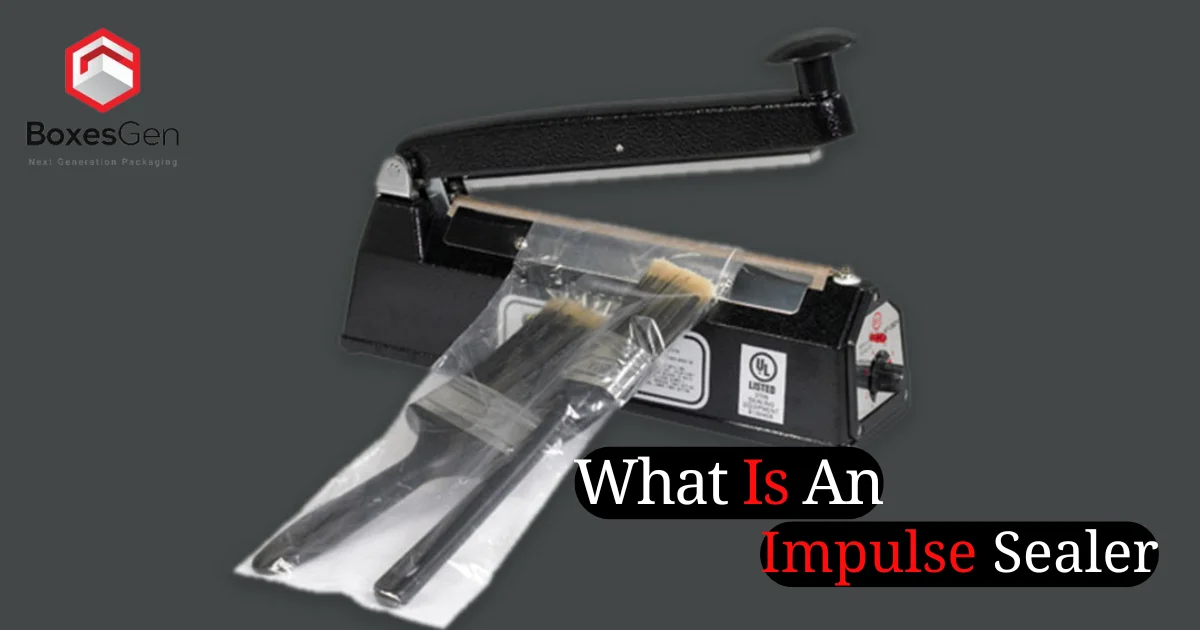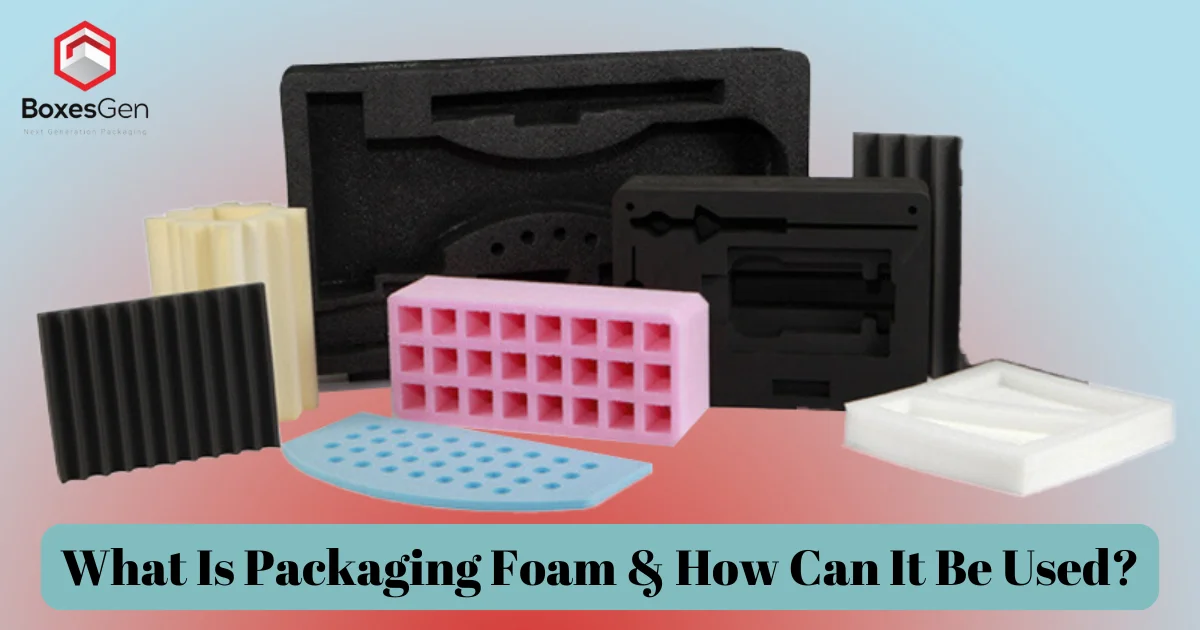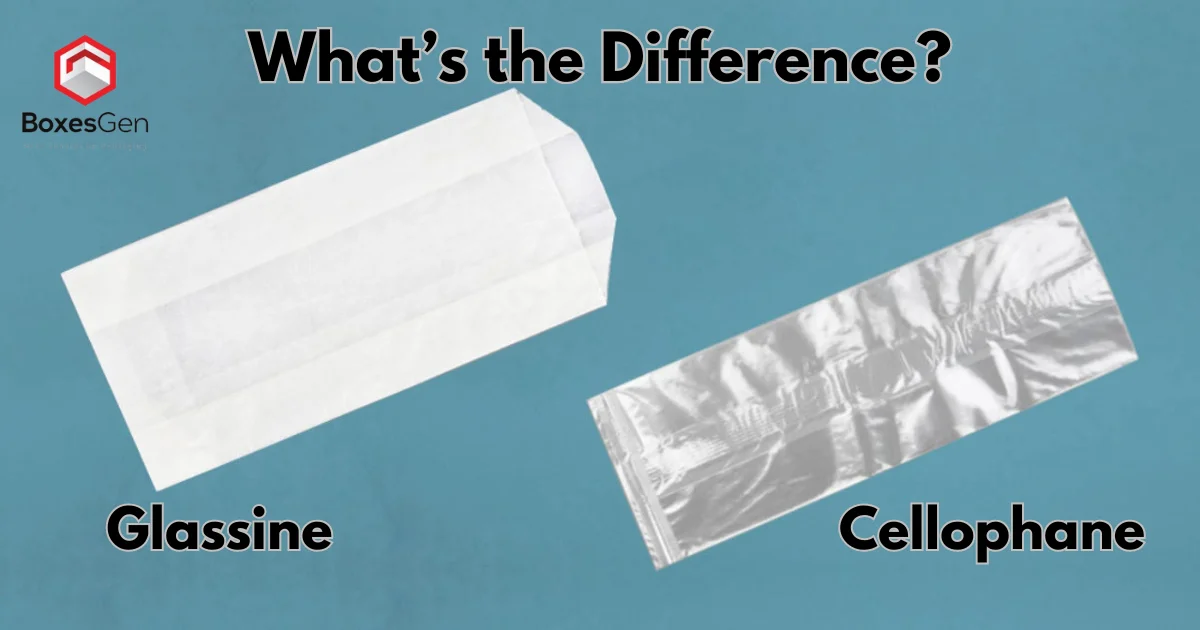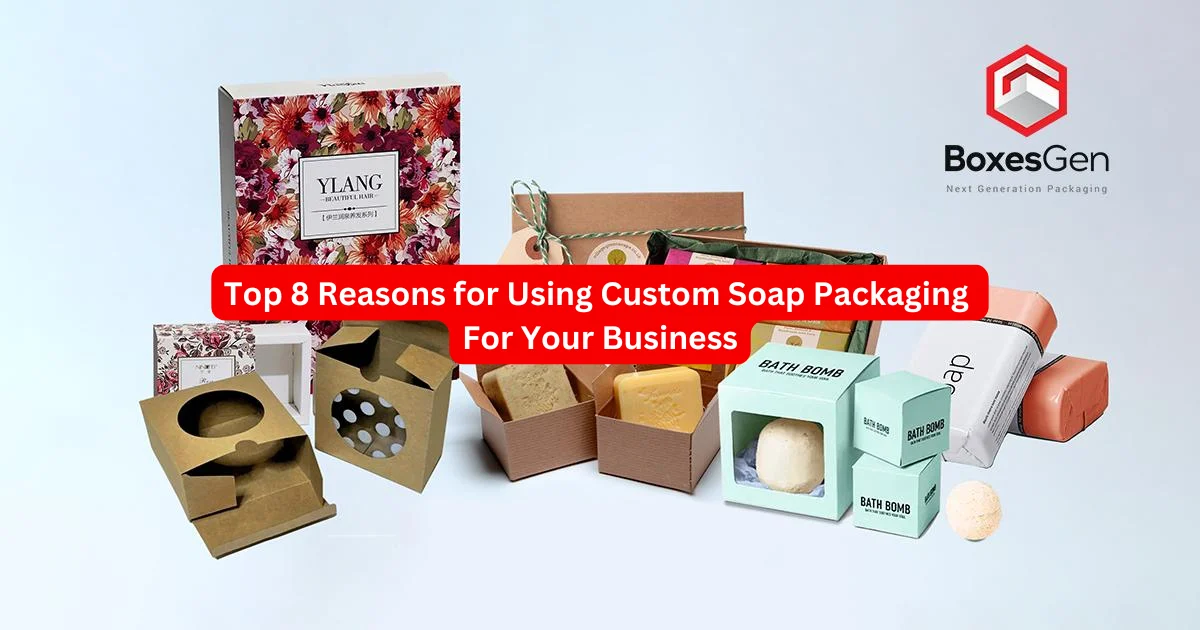Navigating the World of Boxes for Shipping Frozen Food

In the industry of shipping frozen delicacies, the choice of Packaging plays a crucial role in preserving the quality of the contents. Boxes for shipping frozen food, specifically designed for this purpose, have emerged as indispensable allies in ensuring that frozen goods reach their destination in optimal condition.
Shipping frozen food can be a challenging task, as it requires proper packaging, temperature control, and fast delivery to ensure the quality and safety of the food. There are various types of frozen food boxes and containers that can be used to ship frozen food, such as foam insulating food shipping containers, dry ice boxes, Cardboard Boxes with insulated box liners, and more. Each of these options has its own advantages, depending on the size, weight, and type of the food. Some factors to consider when choosing the best box for shipping frozen food are;
- The cost of the box and the shipping service
- The durability and strength of the box
- The insulation and refrigeration of the box
- The compliance and regulations of the box
- The branding and marketing of the box
Can Frozen Food Boxes Be Recycled?
The question of recyclability often lingers in consumers’ minds. The good news is that cardboard, a common material for frozen food boxes, is generally recyclable. However, it’s essential to check local recycling guidelines as some regions may have specific requirements for certain types of cardboard.
One of the key considerations when selecting boxes for shipping frozen food is their recyclability. The growing awareness of environmental impact has led to a surge in demand for recyclable packaging. Fortunately, many boxes for shipping frozen food are crafted from materials that are easily recyclable, aligning with eco-conscious preferences.
Custom Frozen Food Boxes
For businesses seeking a distinct brand identity, custom frozen food boxes for sale provide a unique opportunity. Tailoring the packaging to reflect the brand’s aesthetics not only improves recognition but also communicates a commitment to quality.
Economical Frozen Food Boxes Wholesale
For businesses operating on a larger scale, opting for boxes for shipping frozen food wholesale can be a cost-effective strategy. Bulk purchasing of bespoke frozen food boxes wholesale not only reduces per-unit costs but also ensures a steady supply of packaging, vital for meeting the demands of a bustling frozen food market.
Are Cardboard Frozen Food Boxes Recyclable?
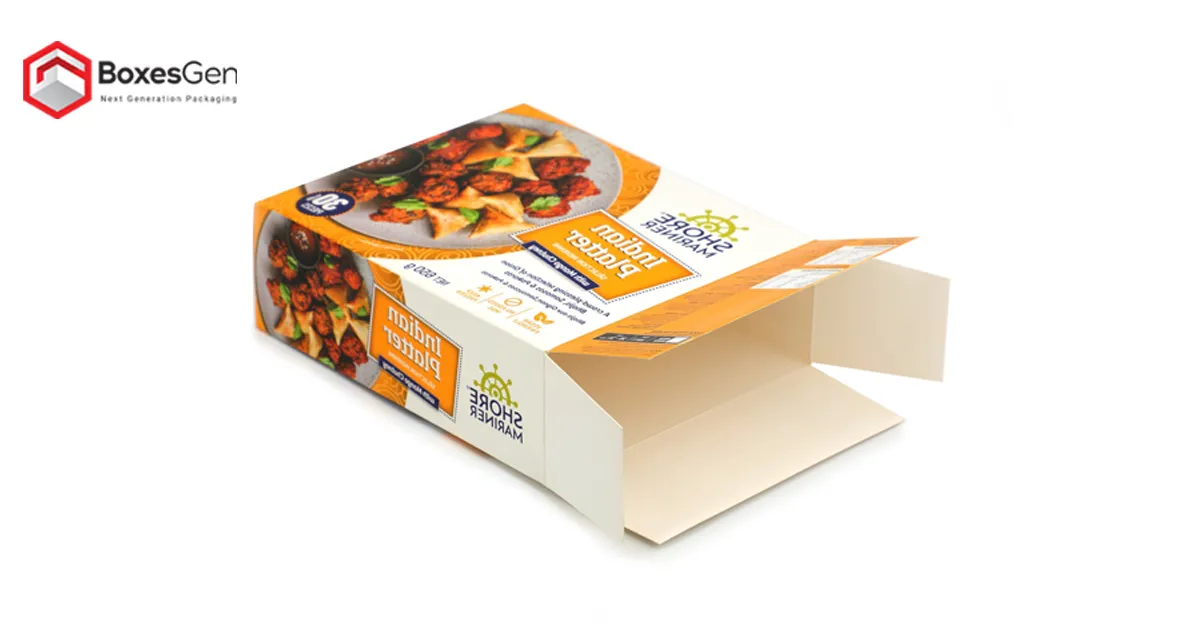
The answer to this question may depend on where you live and what type of cardboard frozen food boxes you have. Generally, cardboard and paperboard components of custom frozen food boxes for sale are recyclable, as they can be broken down and processed into new paper products. However, some frozen food boxes recyclable has a thin layer of plastic coating on them to protect them from condensation and freezer burn. This plastic coating makes it difficult to separate the paper from the plastic, and may prevent some recycling facilities from accepting these frozen Food Boxes Wholesale.
Cardboard, a prevalent material in frozen food boxes, is known for its recyclability. However, consumers should be mindful of removing any non-recyclable components, such as plastic linings or coatings, before recycling. This ensures a seamless recycling process and minimises environmental impact.
Growing Trend of Eco-Friendly Frozen Food Boxes
The surge in environmental consciousness has spurred the development of eco-friendly frozen food boxes. These frozen food boxes wholesale often leverage sustainable materials, further reducing their ecological footprint. Businesses embracing eco-friendly packaging contribute to a greener future while meeting consumer expectations.
Meeting Market Demand with Frozen Food Boxes for Sale
Meeting market demand with custom frozen food boxes for sale is a challenge that many frozen food manufacturers and retailers face. The demand for frozen food has increased significantly, as consumers seek convenience, variety, and long shelf life in their food choices. According to a report by Fortune Business Insights, the global frozen food market size was USD 285.18 billion in 2022 and is projected to grow to USD 412.93 billion by 2030, exhibiting a CAGR of 4.80% during the forecast period.
To meet this growing demand, frozen food businesses need to invest in high-quality and innovative packaging solutions that can protect their products from external factors, such as light, heat, moisture, and contamination, that can affect the quality and safety of the food. They also need to consider the cost, durability, compliance, and branding of their packaging, as well as the preferences and needs of their customers.
Insight into Frozen Food Box Materials
Beyond recyclability, understanding the materials used in crafting boxes for shipping frozen food is crucial. Cardboard, often the material of choice, provides insulation and protection, preventing temperature fluctuations during transit. Some advanced designs incorporate materials with improved insulating properties of custom frozen food boxes recyclable, ensuring the maintenance of the desired low temperatures for extended periods.
Design Revolutions in Frozen Food Box

The packaging industry continually evolves to meet the demands of the frozen food sector. Innovative designs such as vacuum-insulated panels and phase change materials are gaining traction. These advancements in Paper Lunch Boxes not only improve the insulation capabilities of the boxes but also contribute to the overall efficiency of the cold chain.
Temperature-Controlled Shipping Challenges
Shipping frozen food presents unique challenges, primarily centered around maintaining the required low temperatures. Boxes for shipping frozen food, equipped with insulation and often paired with gel packs or dry ice, act as a barrier against temperature fluctuations. Understanding the duration of the shipment and external conditions is vital in selecting the most suitable packaging solution.
Quality Assurance through Rigorous Testing

Given the sensitivity of frozen foods, quality assurance is important. Reputable manufacturers subject their boxes for shipping frozen food to rigorous testing, ensuring they meet industry standards for temperature retention, durability, and overall structural integrity. This commitment to quality for frozen food boxes recyclable reassures businesses and consumers alike that their frozen products are in reliable hands.
Global Trends in Frozen Food Packaging
The demand for frozen food knows no borders, and packaging trends often transcend geographical boundaries. From Europe to Asia, there is a notable shift towards sustainable practices, driving the adoption of recyclable and eco-friendly frozen food boxes for sale. Keeping abreast of global trends ensures businesses remain competitive and adaptable in a dynamic market.
The Role of Regulations in Frozen Food Packaging
Regulatory frameworks play a crucial role in shaping the landscape of frozen food packaging. Compliance with food safety regulations and packaging standards is non-negotiable. Manufacturers and businesses must stay informed about evolving regulations to ensure their boxes for shipping frozen food not only meet consumer expectations but also adhere to legal requirements.
Educating Consumers on Responsible Disposal
While recyclable packaging is a step towards sustainability, educating consumers on responsible disposal is equally important. Clear instructions on how to properly dispose of custom frozen food boxes for sale contribute to a more eco-conscious society. Collaboration between businesses and consumers fosters a collective effort towards a greener, more sustainable future.
The Evolving Landscape of Cold Chain Logistics
An integral aspect of shipping frozen food lies in the intricate web of cold chain logistics. Boxes for shipping frozen food, as a vital component of this process, must seamlessly integrate into a well-coordinated system. From storage facilities with controlled temperatures to transportation methods that minimise the risk of thawing, the entire cold chain relies on efficient packaging solutions to guarantee the safety and quality of frozen goods.
Addressing Challenges in Biodegradability
While recyclability is a key consideration, the biodegradability of packaging materials is gaining prominence. Businesses are exploring alternatives to traditional plastics, seeking materials that break down naturally without causing harm to the environment. The development of biodegradable frozen food boxes and Chinese Takeout Boxes aligns with the broader industry commitment to reducing waste and environmental impact.
Consumer Convenience and Frozen Food Boxes
Apart from preserving the integrity of frozen goods, packaging also plays a role in improving consumer convenience. Easy-to-open designs, portioned compartments, and user-friendly features contribute to a positive consumer experience. As the frozen food market expands, packaging innovations that prioritise both functionality and sustainability are likely to become increasingly prevalent.
Technology Integration for Real-Time Monitoring
In the era of smart packaging, incorporating technology for real-time monitoring is a game-changer. Some frozen food boxes come equipped with sensors that track temperature conditions throughout the shipping process. This not only ensures compliance with quality standards but also provides valuable data for businesses to continually optimise their cold chain logistics.
The Impact of Branding on Frozen Food Boxes
Branding extends beyond just logos and colours; it encompasses the entire consumer experience, including packaging. Frozen food boxes serve as a canvas for brand storytelling. Companies are leveraging this opportunity to communicate their commitment to quality, sustainability, and the overall ethos of their brand. Packaging, therefore, becomes a strategic tool for building brand loyalty and trust.
Conclusion
The world of boxes for shipping frozen food is diverse, catering to the intricate needs of businesses and consumers alike. From recyclability and customisation to cost-effective solutions, choosing the right frozen food box is vital in delivering frozen delights while preserving environmental sustainability. Businesses navigating this landscape must not only consider the practical aspects of packaging but also embrace the evolving trends and responsibilities associated with environmentally conscious practices. By doing so, the frozen food industry can continue to thrive while contributing positively to the planet.
FAQs of Boxes for Shipping Frozen Food
Are Frozen Food Boxes Environmentally Friendly?
Yes, many frozen food boxes are crafted from recyclable materials, aligning with eco-conscious preferences. The industry is also embracing sustainable practices, with a surge in eco-friendly options that contribute to a greener future.
How Do Innovative Designs Impact Frozen Food Packaging?
Innovative designs, such as vacuum-insulated panels and phase change materials, improve the insulation capabilities of frozen food boxes. These advancements contribute to the overall efficiency of the cold chain, ensuring optimal temperature maintenance during transit.
How Technology Contributes in Frozen Food Packaging?
Technology plays a crucial role in real-time monitoring. Some frozen food boxes come equipped with sensors that track temperature conditions throughout the shipping process. This ensures compliance with quality standards and provides valuable data for continual logistics optimisation.
Why Is Biodegradability Becoming Crucial in Packaging?
Biodegradability is gaining prominence as businesses seek alternatives to traditional plastics. The development of biodegradable frozen food boxes aligns with the industry’s commitment to reducing waste and environmental impact, addressing the growing demand for sustainable packaging solutions.
How Does Branding Influence the Choice of Packaging?
Branding extends to packaging, serving as a canvas for brand storytelling. Frozen food boxes become a strategic tool for communicating a company’s commitment to quality, sustainability, and overall brand ethos. It plays a pivotal role in building brand loyalty and trust among consumers.
